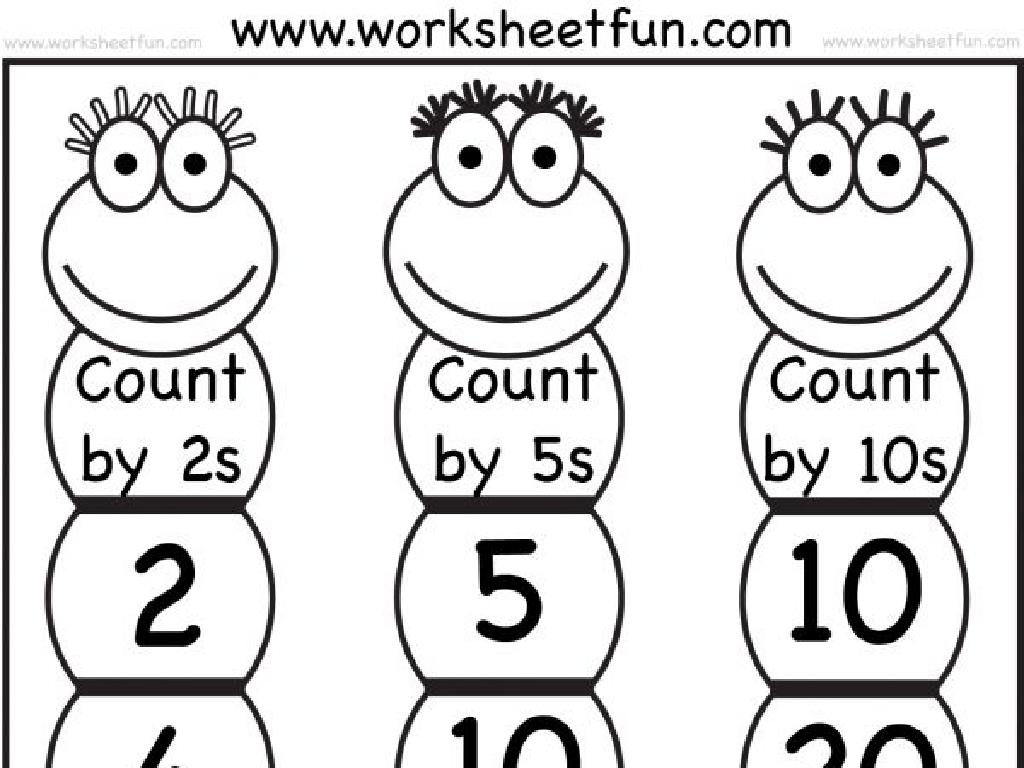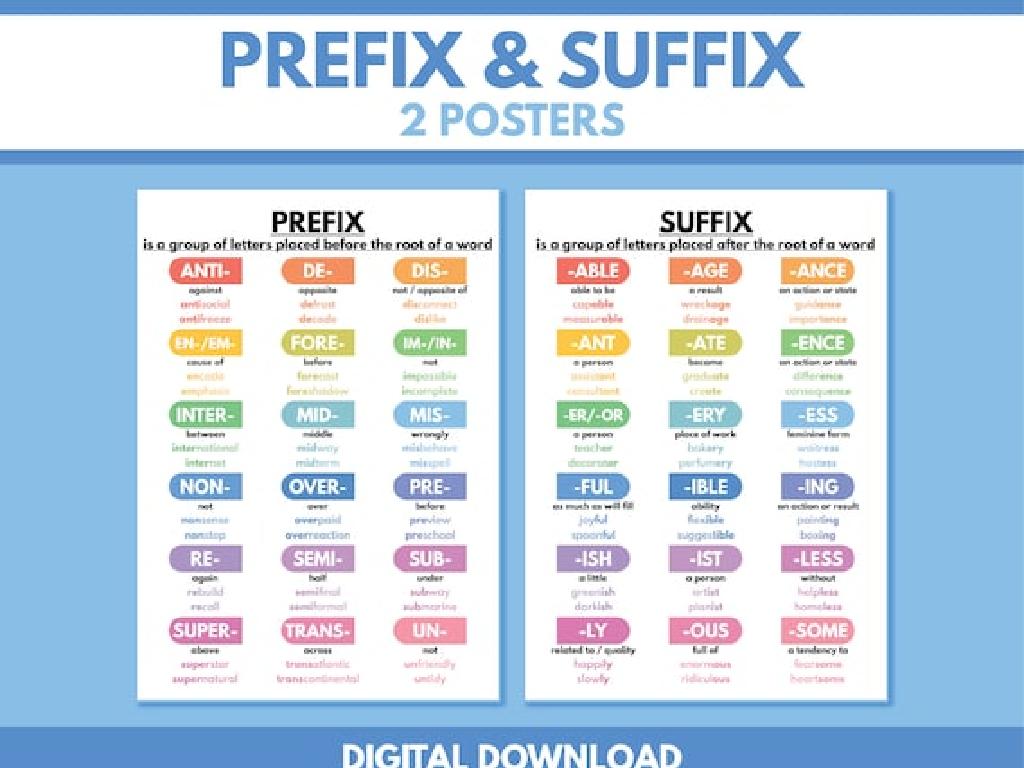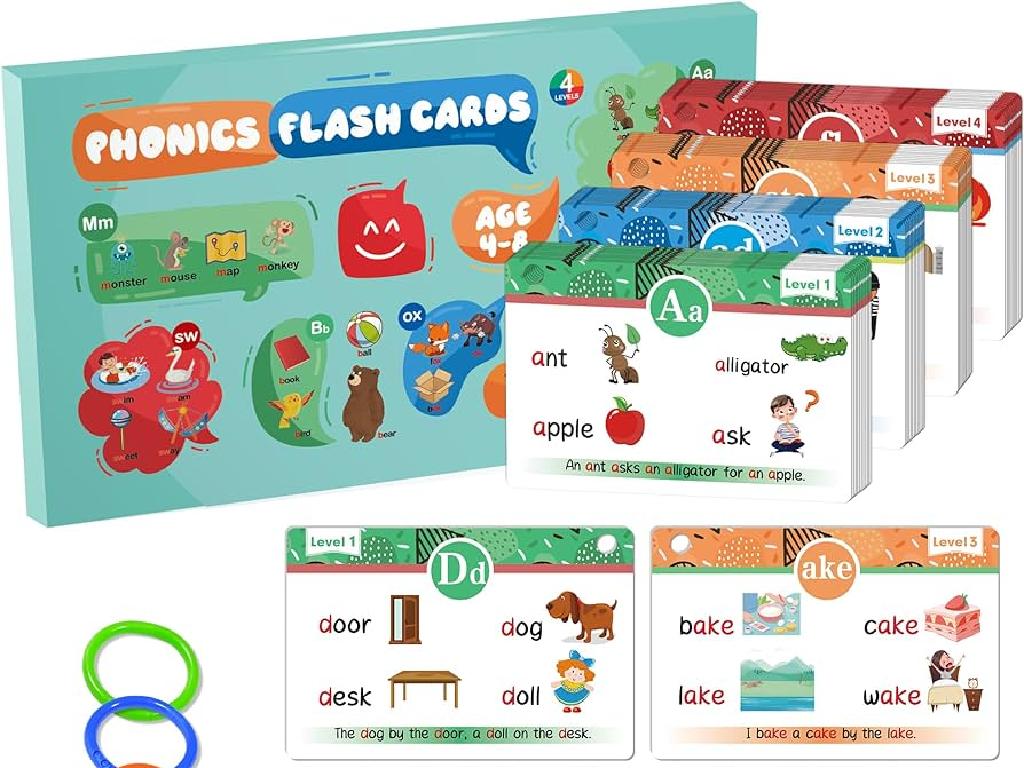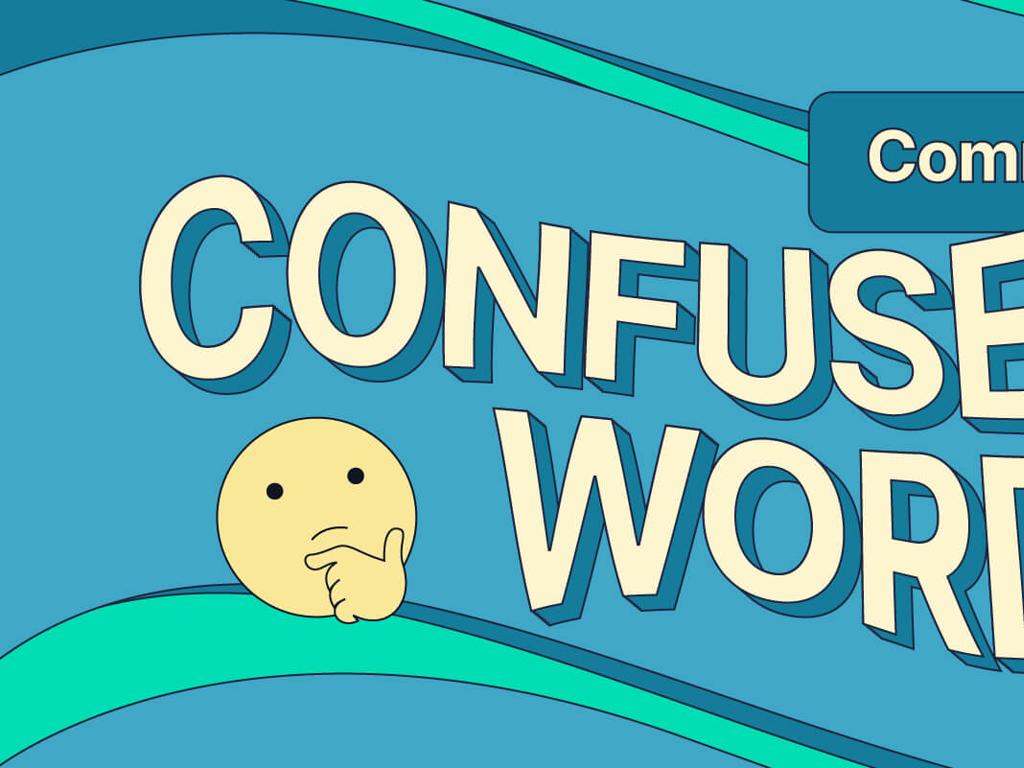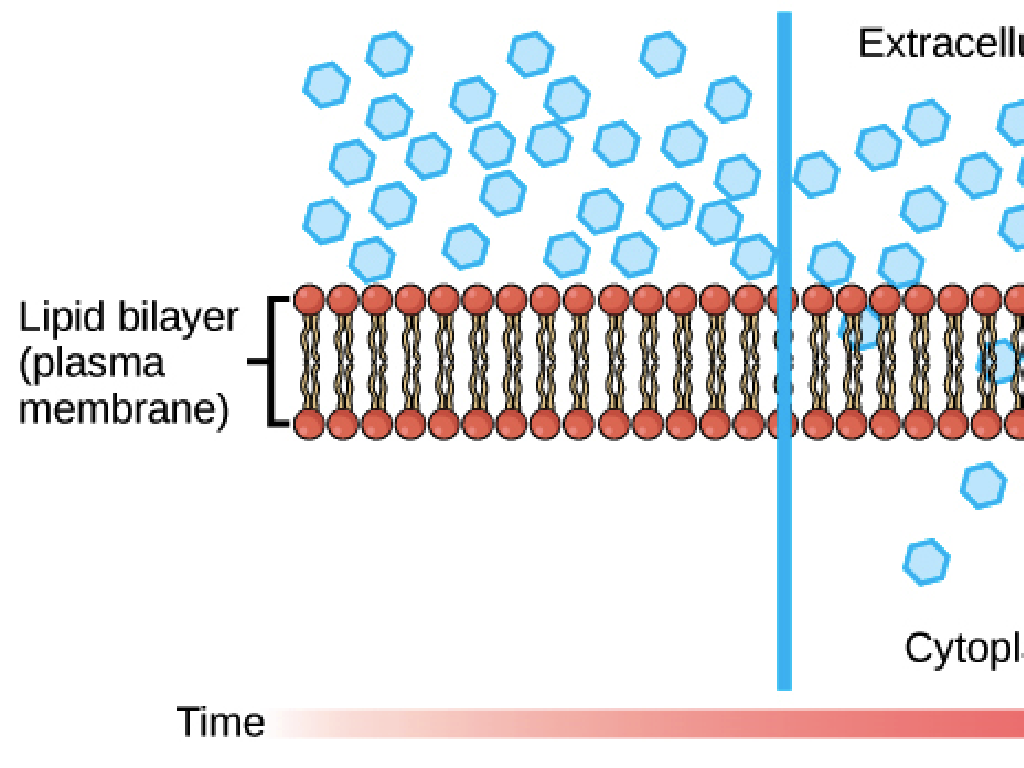Use Models To Add Two-Digit Numbers - With Regrouping
Subject: Math
Grade: Second grade
Topic: Addition Strategies: Two Digits
Please LOG IN to download the presentation. Access is available to registered users only.
View More Content
Mastering Two-Digit Addition with Regrouping
– Learn a new addition method
– Two-digit addition with regrouping
– When the sum of two digits is 10 or more, we regroup to make addition easier.
– Significance of regrouping
– Regrouping helps us add numbers neatly and correctly.
– Applying skill to larger numbers
– This method is not just for small numbers; it’s essential for adding any big numbers.
|
Today’s lesson introduces students to the concept of regrouping in addition, which is a foundational skill for all future math work involving larger numbers. Start by explaining that sometimes when we add two-digit numbers, the digits in one place (like the ones place) add up to 10 or more, which means we need to ‘carry over’ to the next place value. Use examples on the board and provide hands-on practice with physical manipulatives if possible. Emphasize the importance of this skill by explaining how it applies to not just two-digit numbers, but also to larger numbers they will encounter as they progress in math. Encourage students to practice this skill with a variety of problems to build their confidence and understanding.
Understanding Regrouping in Addition
– Regrouping: exchanging ones for tens
– Like trading 10 pennies for 1 dime
– Regrouping makes addition easier
– Helps us add large numbers step by step
– Use regrouping for sums over 9
– If adding 8 + 7, we get 15; we regroup the 10 to make a new ten
– Practice with example problems
– Try adding 26 + 17 by regrouping the ones
|
This slide introduces the concept of regrouping, a fundamental skill in addition for second graders. Regrouping is the process of exchanging a certain number of smaller units for a larger unit, such as turning ten ones into one ten. This is similar to exchanging ten pennies for one dime. It’s a technique that simplifies the addition of two-digit numbers, especially when the sum of the ones place exceeds 9. For example, when adding 8 + 7, the sum is 15, which is more than 9, so we regroup the 10 to make a new ten. Provide students with hands-on practice, such as using base-ten blocks or drawing pictures, to visualize the regrouping process. Encourage them to work through example problems and explain their thinking. The notes contain detailed guidelines for the teacher to facilitate understanding and to suggest various activities for practice.
Adding Two-Digit Numbers Without Regrouping
– Start with 23 + 35 example
– Add ones place: 3 + 5
– Equals 8, write 8 in ones place
– Add tens place: 20 + 30
– Equals 50, write 50 in tens place
– Each place value is under 10
|
This slide introduces students to the concept of adding two-digit numbers without the need for regrouping. Begin with the example 23 + 35. Explain that we add the ones place digits first (3 + 5), which equals 8, and then we add the tens place digits (20 + 30), which equals 50. Emphasize that in this example, each place value sum is less than 10, so we don’t need to regroup. Write the sums below the respective place values, aligning the digits correctly. This will help students understand the importance of place value in addition. Encourage students to practice with similar examples and ensure they understand why regrouping isn’t necessary in this case.
Understanding Regrouping in Addition
– When to regroup numbers
– Example: Adding 27 + 38
– 7 ones + 8 ones = 15 ones, which is more than 9
– Ones place exceeds 9
– We have more than 9 ones, so we regroup 10 ones as 1 ten
– Regroup to simplify addition
– Regrouping makes it easier to add large numbers
|
This slide introduces the concept of regrouping when adding two-digit numbers. Start by explaining that sometimes when we add the ones place, the sum can exceed 9, which is too large to fit in the ones place. Use the example of 27 + 38 to show that 7 ones plus 8 ones equals 15 ones. Since 15 is greater than 9, we regroup by converting 10 ones into 1 ten and adding it to the tens place. This process simplifies addition and is a fundamental skill in second-grade math. Encourage students to practice with different numbers and ensure they understand the concept of regrouping before moving on to more complex addition problems.
Understanding Regrouping in Addition
– Exchange 10 ones for 1 ten
– Like trading 10 pennies for 1 dime
– Move the 1 ten to the tens place
– The ten goes next to the other tens
– Add the tens place numbers
– Add all the tens together
– Complete the addition
|
This slide introduces the concept of regrouping, which is essential when adding two-digit numbers and the sum of the ones exceeds 9. Start by explaining that in place value, 10 ones are equal to 1 ten, similar to how 10 pennies can be traded for 1 dime. This makes it easier to add larger numbers. Show how to carry over the ten to the tens column on the board or with physical manipulatives. Then, proceed to add the numbers in the tens place, including the regrouped ten. Finish by adding both the tens and ones places to find the final sum. Use examples with actual numbers and encourage students to practice with different problems.
Let’s Practice Addition with Regrouping!
– Start with adding ones: 6 + 7
– 6 ones plus 7 ones equals 13 ones
– Regroup the ones to tens
– 10 ones become 1 ten, we have 3 ones left
– Add the tens together
– 4 tens plus 5 tens plus 1 ten from regrouping
– Count the total tens and ones
– Add all tens and the remaining ones for the final sum
|
This slide is an interactive class activity to practice adding two-digit numbers with regrouping. Start by adding the ones place digits. When the sum is more than 9, regroup by converting 10 ones into 1 ten. Next, add the tens place digits along with any tens that were regrouped. Finish by combining the total tens and ones to find the final sum. For the activity, provide several examples and use visual aids like base-ten blocks or drawings to help students visualize the regrouping process. Encourage students to work through the steps with you and then independently, using their own examples.
Your Turn to Try: Adding with Regrouping
– Solve 34 + 29 on your paper
– Start by adding the ones place
– Add 4 (from 34) and 9 (from 29)
– Add the tens place next
– Add 3 (from 34) and 2 (from 29)
– Regroup if ones are more than 9
– If ones sum > 9, carry over to the tens
|
This slide is an activity for students to practice adding two-digit numbers with regrouping. Students should first add the ones place digits (4 + 9). Since this sum is greater than 9, they need to regroup by carrying over to the tens place. Next, they add the tens place digits (3 + 2), plus the carried over 1 from the ones place. The teacher should circulate the room to assist students as needed, ensuring they understand the concept of regrouping. Possible variations of the activity could include using manipulatives, drawing place value charts, or pairing students to solve together.
Class Activity: Addition Bingo
– Play Bingo with addition problems
– Solve problems to cover answers
– Aim for five in a row to win
– Practice regrouping with fun
– Use two-digit addition with regrouping in game format
|
This interactive class activity is designed to help students practice adding two-digit numbers with regrouping in a fun and engaging way. Prepare Bingo cards in advance with a variety of two-digit addition problems that require regrouping. Ensure that the answers are within the range of numbers on the Bingo cards. As students solve the problems, they will search for the answer on their Bingo card and cover it with a marker. The first student to cover five answers in a row horizontally, vertically, or diagonally wins the game. Encourage students to double-check their work before covering an answer. Possible variations of the game could include playing in small groups, timed rounds, or requiring students to solve a problem before they can claim a Bingo spot. This activity reinforces mental math skills and the concept of regrouping, all while providing a playful learning experience.
Conclusion: Mastering Addition with Regrouping
– Celebrate learning addition with regrouping
– Regroup ones when over 9
– If you have 10 or more ones, move to the tens place
– Practice is key to perfection
– Continue practicing at home!
– Try adding numbers in homework and real life
|
Well done on completing the lesson on adding two-digit numbers with regrouping! It’s important for students to remember that whenever the ones column adds up to more than 9, they need to regroup and carry over to the tens column. Reinforce the concept that practice is essential for mastering this skill. Encourage students to practice with their homework and by finding opportunities to add numbers in everyday situations. Provide additional worksheets for them to take home and practice. Remind them that making mistakes is part of learning and that with each practice session, they’ll get better and faster at adding with regrouping.

